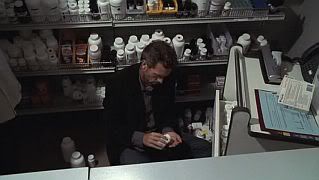Currently, I am in the midst of studying viruses in medical school. Being the comic book geek that I am, my studies have reminded me of a certain member of the Green Lantern Corps:

Meet Leezle Pon, Green Lantern of Sector 119. Not only is he the smallest member of the Corps, he is a super-intelligent smallpox virus. Seeing as how it is debatable whether viruses are even true organisms, it is amazing that Leezle Pon has a name, a gender assignment, sentience, and the will power to overcome fear that is requisite of all Green Lanterns. If you still are not amazed, take into account that Leezle Pon has an archnemesis: Despotellis, another intelligent virus who is responsible for the death of Leezle Pon's partner (must have been some interesting stakeouts).
If you are wondering what creative mind came up with such a concept as a Green Lantern smallpox virus, look no further than Alan Moore. That's right. The same Alan Moore who is the genius behind Watchmen, V for Vendetta, The League of Extraordinary Gentlemen, From Hell, and much, much more. Leezle Pon was not the only weird Green Lantern Moore created for the Corps. Perhaps even more famous is his creation of Mogo, a Green Lantern who is an entire sentient planet.



